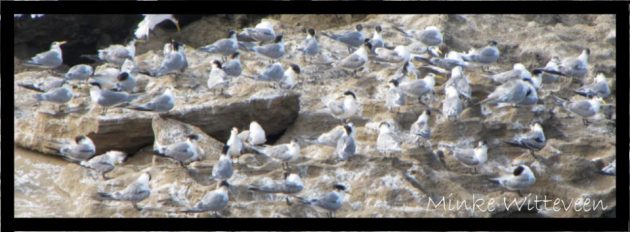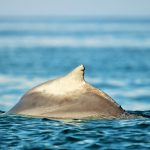Twists and turns of the swift tern

Outside of the breeding season, they can be found further out to sea all along this range. There are 5 subspecies of swift tern, and the nominate race Thalasseus bergii bergii can be found breeding in South Africa. In Plettenberg Bay, you can often see them in large flocks roosting on sand bars in the Keurbooms estuary, on the Island rocks at Robberg Peninsula, or out at sea on one of our boats.
Swift terns have a powerful flight pattern with deep wing beats, and are endlessly entertaining as they indulge in graceful follow-the-leader aerobatics. They feed mostly out at sea where they dip onto the surface or plunge dive up to 1 meter. Unfortunately swift terns are vulnerable to human disturbance at their breeding colonies which can lead to nest desertion, and increased predation of eggs and chicks by predators (often kelp gulls).
Baited hooks, fishing lines, nets, and human refuse also pose a threat to this species. We are fortunate that this species is classified as Least Concern according to the IUCN, with an increasing population, which has been attributed to an increase in breeding participation, a high production of fledglings, and their ability to move between breeding localities.
Written by: Minke Witteveen
For further reading:
- BirdLife International. 2016. Thalasseus bergii. The IUCN Red List of Threatened Species 2016. Accessed: 2017-04-22. URL: http://www.iucnredlist.org/details/22694571/0
- Crawford, R.J.M. 2013. Long-term change in the population sizes and conservation status of South Africa’s seabirds. Ostrich 84:v-ix.



